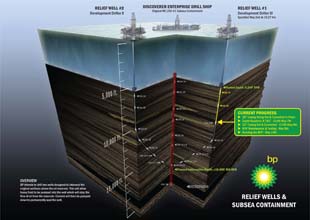The Environmental Protection agency has finally responded to increasing concern about the chemicals BP is spreading in the Gulf of Mexico. On Wednesday night, the EPA demanded that the company start using less-toxic alternatives in clean-up efforts.
The Washington Post has the scoop. According to the Post’s sources, the EPA gave BP 24 hours to pick a less toxic brand of dispersant, and the company must start using a new product within 72 hours of submitting a list of alternatives. From the Post:
“Dispersants have never been used in this volume before,” said an administration official spoke on condition of anonymity because the decision hasn’t been formally announced. “This is a large amount of dispersants being used, larger amounts than have ever been used, on a pipe that continues to leak oil and that BP is still trying to cap.”
This is a major move, reflecting growing concerns from environmentalists and marine scientists about the potential damage that these chemicals might be doing in the Gulf. Last weekend, the EPA approved the use of dispersants at the spill site—a method of dealing with an oil spill that has never been used before. BP has already used more than 600,000 gallons of Corexit, the company’s dispersant of choice, despite the fact that there are less-toxic options on the market.
The EPA is posting updates on dispersant monitoring on its website. I’m still waiting on an official statement from the EPA about this, and will update when it is available.
UPDATE: Here’s the directive from EPA to BP calling for a less-toxic dispersant. The agency also said Thursday that it would begin posting the monitoring data they are gathering on dispersants on the BP spill website.











